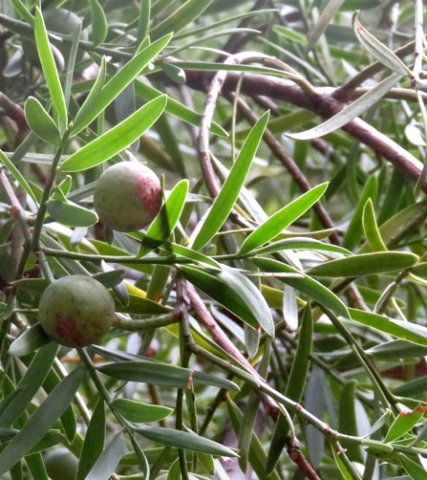Afrocarpus falcatus leaves and green fruit

Author: Ivan Lätti
Photographer: Thabo Maphisa
The simple leaves of Afrocarpus falcatus spiral up the stems or grow whorled or alternate on short stalks. They are clustered at stem-tips and carried rigidly. Some young-stem leaves are opposite or sub-opposite.
The leaves are narrow, lanceolate or oblong and characteristically curved or falcate, i.e. sickle-shaped; the reason for the specific name, falcatus. The margins are entire, appearing translucent against the sunlight in the photo. The leaf-tips are acutely pointed, the blades often twisted at the base. The blades are dark green and smooth, sometimes covered in a greyish bloom.
The leaf has only one resin canal, rather than the three to five of the leaves of the other yellowwoods, the Podocarpus species. This difference probably caused the split of the genus whereby this tree was classified in Afrocarpus genus.
The tree in picture is female as it bears fruit. The seed is found inside the spherical, fleshy covering that is yellow when it is ripe. The fruits are relished by fruit bats, Knysna louries, monkeys and baboons that all contribute to seed dispersal (Venter, 2012; Coates Palgrave, 2002; iNaturalist).

